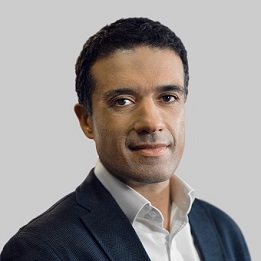In brief
- Digital challengers are pushing traditional banks to digitalize and automate for competitive advantage. Legacy technology hampers traditional banks' speed to market, while digital banks benefit from streamlined architecture and as-a-Service delivery models.
- Zoreza Global, in partnership with Finastra, offers comprehensive solutions for banks and treasury services, including trading, risk management, data management, and regulatory reporting as a Service. Data security concerns are addressed through the security measures offered by public cloud providers.
- As-a-Service solutions enable quicker deployment, as seen in a digital bank's treasury project, which went live within months. COVID-19 has accelerated the adoption of cloud and as-a-Service models, and digital banks focus on early revenue generation to offset investment costs. Both traditional and digital banks are moving toward mutualized infrastructure for omnichannel services and external data sharing.
Traditional banks need to digitalize and automate continuously to compete with their faster, more agile digital challengers.
Without the considerable handicap of legacy technology, digital banks are able to respond and get to market extremely quickly. And — in the same way that complex and unwieldy software packages are a huge burden on conventional banks, and new functionalities are difficult and expensive to deploy — it’s just a fact of modern business life.
Finastra and Zoreza Global have worked on resolving many of those concerns, delivering a comprehensive solution to banks and treasury services. These services combine a simplified architecture and an as-a-Service delivery model, which can be used as a seed for a streamlined, cloud-based Treasury as-a-Service offering.
Strategic partnerships and Trading as-a-Service
Zoreza Global has established a unique ecosystem (Zoreza Global Beyond) through strategic partnerships with third-party software and cloud providers. We deliver a comprehensive coverage of our clients’ business processes, including trading front-to-back office, risk management, data management and regulatory reporting.
Clients consume our Solution as-a-Service without worrying about the infrastructure, data security and inter-systems integration complexity.
The data security dilemma
When banks think about Software as-a-Service, or Risk as-a-Service for that matter, the major concern is always the sensitive issue of data security.
The reality is that public cloud providers offer sound and proven solutions covering the entire data access framework: Authentication, data encryption, access control, data masking, secure deletion and data integrity. In fact, their steady commitment to compliance and massive investment in secure access to data, means banks are safer in the public cloud than anywhere else.
Banks can now achieve the same (or better) level of security at a lower cost, resulting in a major shift in mindset and approach. Increasingly, banks are trusting cloud providers as they offer multiple data storage options for non-critical data and a safe haven for banks to grow at a manageable pace.
As-a-Service: Business solutions at speed
For a typical treasury project (cross assets including risk), previously, we needed 12 to 18 months to get a first solution into production. Today, thanks to as-a-Service solutions, clients can see their first products in production, in days and weeks.
As an example, recently, we were selected by a digital bank to deliver their treasury solution front-to-risk-to-back office. The solution covers everything from infrastructure, to run and change on multiple years, where the bank simply has to use it as-a-Service. The solution is delivered in phases ensuring a quick time-to-market and incremental coverage:
- Month 4: Initial front-to-back treasury solution in production on basic products
- Month 7: Advanced treasury solution with more straight-through processing (STP)
- Month 12: Fully advanced treasury solution
Tackling inbuilt disruption
For digital banks and neobanks, time-to-market is key. Currently, banking is a very competitive space, especially post-COVID. Of course, some topics have been under discussion for a long time, like as-a-Service and cloud, but COVID has really accelerated the thinking process. To make matters worse, banks suddenly found themselves operating with a totally remote workforce.
Today, the world of financial services seems to come with built-in operational disruptions. So, banks must have infrastructure and solutions which are flexible enough to scale up or down. They also need to increase cost transparency — better business outcomes are about more than cost reduction.
Resolving the profitability equation through early revenue generation
In the example above, the digital bank has a workable solution in just 4 months, where the first customers can generate revenue to offset the bank’s investment. This creates a positive cycle, increasing revenue and offsetting cost. Compared to traditional business cases, this is a more solid and sustainable model.
Two digital approaches with a common aim
The traditional bank approach to digital is about cost saving, migrating from legacy to the cloud and advancing along those lines. For digital and neobanks, the treasury business is shifting toward omnichannel, bringing the function closer to customers.
Therefore, customers have to be able to use different services on different channels and banks need cloud computation for that. Also, banks need to be able to open their data to external agencies for risk exposure, collateral management calculation and so on.
This tendency is growing in both types of bank, moving them toward a shared infrastructure. We think that will be the next stage of usage — mutualizing the infrastructure and resources between different treasury functions.
Get in touch
If you’d like to learn more about Treasury as-a-Service and the Zoreza Global and Finastra partnership approach to digital modernization, then visit luxoft.com/capital-markets or contact one of our expert consultants at financialservices@luxoft.com.









